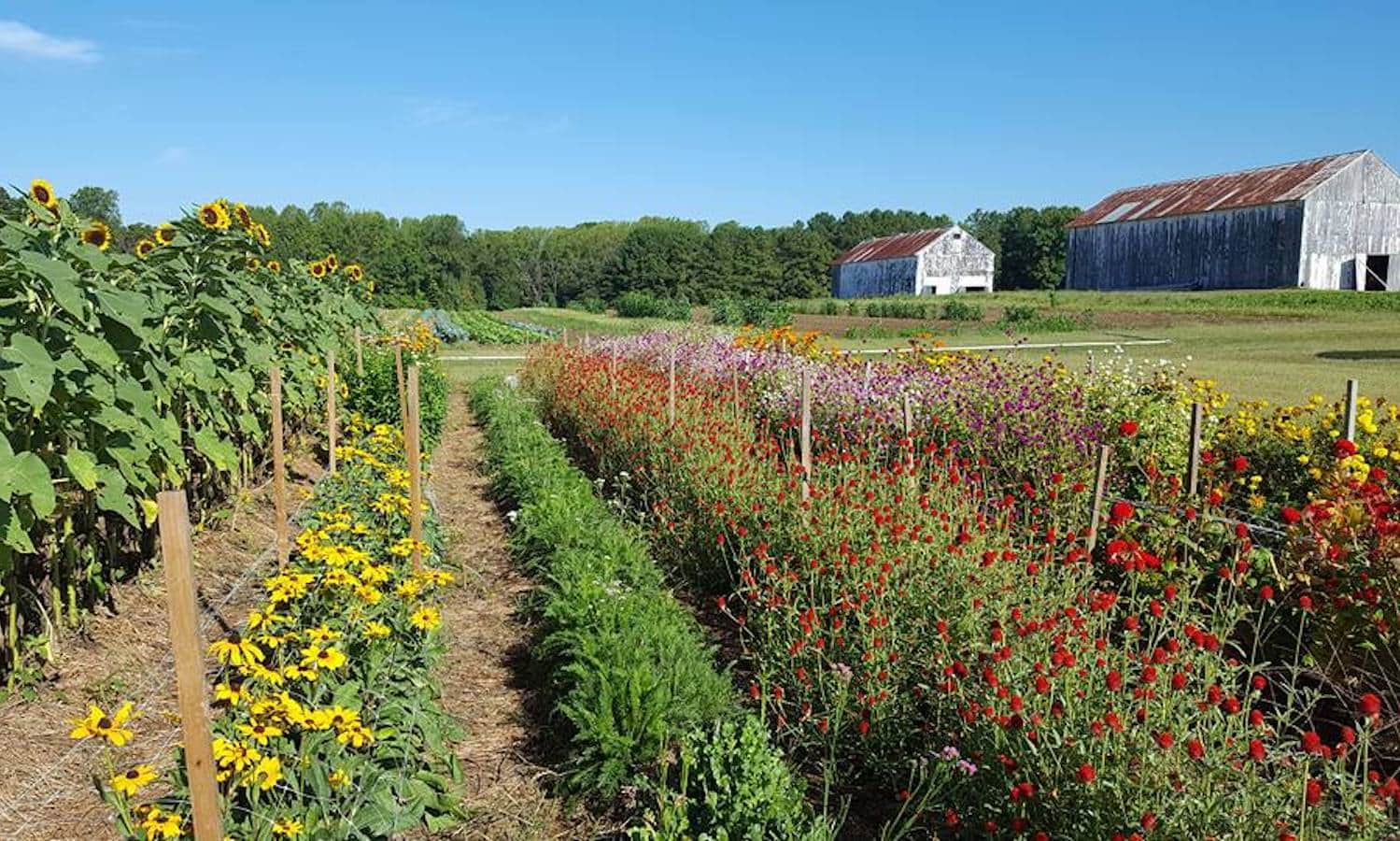The University of Maryland recently pledged to reduce 25 percent of food-based greenhouse gas emissions by 2030
At the University of Maryland’s South Campus Dining Hall, healthful food choices for students and the planet are on display. Leafy greens, chickpeas, and red peppers are included in a salad station. Whole-roasted potatoes and pears sit in front of pizza and paninis. Fresh kale smoothies, with strawberries and peaches, are adjacent to oven-baked chocolate chip cookies.
Outside, trucks carrying green apples and local produce deliver sustainable options for 41,000 students.
For the 9,000 students who eat 30,000 daily meals on campus, many of these choices are symbolic firsts. Freshmen are eating away from home for the first time. The University of Maryland is the first college to sign the World Resource Institute’s Cool Food Pledge, a commitment to reduce 25 percent of the University’s food-related greenhouse gas emissions by 2030. This is the first academic year the pledge can double as a curriculum.
Environmental science and policy majors, dietetic interns, food fellows, and doctoral candidates studying global stewardship are collaborating with Allison Lilly Tjaden, M.P.H., Assistant Director of New Initiatives at the University of Maryland Dining Services. They will plan, purchase, promote, and potentially measure the global co-benefits of the pledge.
“The movement has been growing on our campus for several years,” explains Tjaden, smiling through her packed Friday morning office hours. Her prompt for students: “How are we going to bring our community along with us on that journey?”
Twenty-eight other institutions, including Harvard University, Boston Medical Center, the University of Pittsburgh, and several University of California health systems pledged. The 10-year commitment was formally unveiled during Climate Week in New York City in September 2019.
Shortly after, the Proceedings of the National Academies of Sciences published a study confirming two-for-one health foods. After assessing 15 food categories, the researchers found food groups with the strongest health outcomes, starting with vegetables, are usually the least environmentally expensive to produce.
Signatories of the Pledge can choose five calculations to quantify the environmental price of annual food purchases: measuring food by type or weight, land or water use, agricultural emissions, or carbon opportunity costs. If the signatories meet the 2030 target, they will reduce 25 percent of greenhouse gas emissions from 800 million annual meals, the equivalent to taking 170,000 cars off the road. They will also meet targets to reduce two-thirds of their food-related greenhouse gas emissions by 2050, a goal that aligns with the Paris Agreement, a coalition among 187 countries and provinces to prevent the Earth’s temperature from rising above 1.5 to 2 degrees Celsius this century.
The U.S. was one of the first Paris Agreement signatories in 2016 but will withdraw from the global climate agreement in 2020, which makes the timing of the Cool Food Pledge significant.
Tjaden says the pledge is “really driven by students’ commitment and passion to push for us to be more and more sustainable, and the campus’ overall commitment to environmental sustainability.” The university aims to become carbon neutral by 2050.
Tjaden and her colleagues first heard about the Cool Food Pledge through the Menus of Change University Research Collaborative. Menus of Change, created by nutrition scholars at Harvard’s T.H. Chan School of Public Health and chefs with the Culinary Institute of America, help institutions promote healthier, sustainable, “plant-forward” choices. In plant-forward models, whole produce, and plant-based options, like beans, nuts, and seeds, are celebrated and prioritized but not exclusive menu items. Twenty-four principles guide plant purchasing and placement.
Examples at Maryland include Terp Farm, an organic vegetable farm off-campus, green food trucks, a weekly farmer’s market, local food purchases, culinary training, and visual vegetable placement in the cafeteria.
Madelyn Miller, a senior majoring in government and politics and minoring in sustainability studies, is working with Tjaden as a Menus of Change fellow and will conduct an audit to see which foods and menu items are most popular with students.
“If you implement (the principles) correctly, you’re giving yourself a chance to find more connections with students,” says Miller. She finds eating together on campus unifies students. “It’s something that you can meet people wherever they are on the issue and get a positive response.”
Ten environmental science policy seniors are working with Tjaden to calculate how the university can reach the 2030 food-based greenhouse gas emission targets. The World Resources Institute encourages signatories to think about trade-offs: nuts are a healthful but water-intensive food purchase. Organic farming uses more natural resources compared to conventional methods but reduces farmers and students to pesticides. Sugar is cheap, but it’s not a health staple.
Doctoral students in the global stewardship program will also see if it’s possible to track student health outcomes, global water use, and sustainable farming practices following changes to the university’s 6 million annual meals. The science for the global co-benefit calculations is still pending but the energy unifying students is clear.
“Having that measurable goal gives you something to be working towards and tracking every year and celebrating,” Tjaden says. “When it aligns, too, with what the students are looking for us to do, it gives us a lot of energy. The idea of bringing a lot of people on board is really important.”











